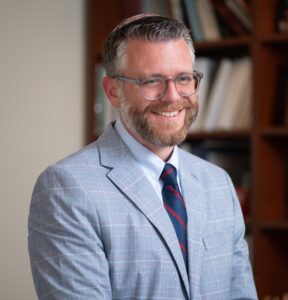
Repentence and the Mystical ‘Rope’: The Divine/Human Relationship in Jewish Thought
Sep 16, 2024 By Shira Billet | Public Event video | Video Lecture | Rosh Hashanah | Yom Kippur
One of the most striking images of the divine-human relationship in Jewish thought is the kabbalistic image of a rope or cord that extends from God in the heavens into the soul of the human being. We explore a diverse array of Jewish thinkers over the centuries who have found this metaphor meaningful, especially in times of challenge and suffering, giving them hope to continue to strive to become closer to God. In the context of the High Holiday season, we give special attention to connections between this metaphor and themes and liturgies of the High Holiday season.
Read More
Pour Out Your Hearts
Oct 3, 2024 By Joel Seltzer | Commentary | Rosh Hashanah
Hannah provides a powerful paradigm of prayer for us on these Days of Awe. Are we concerned with how we may appear when we are in prayer?
Read More
Is Love Enough?
Aug 16, 2024 By Judith Hauptman | Commentary | Va'et-hannan
This context helps explain why both Shema paragraphs need to be included in our morning and evening prayers. The first paragraph opens with a confession of faith in the one God, and demands loving this one God with all our heart, soul, and might. It goes on to say that we are to keep the words God issued this day in our hearts and on our lips at all times, and we should teach them to our children. We are even told to “wear” these commandments on our arms and foreheads and to display them in public places. In all, the first paragraph of the Shema is very upbeat, with its focus on love of God and mitzvot.
Read More
What Blessing Do You Need Now?
Jun 14, 2024 By Andrea Merow | Commentary | Naso
In Parashat Naso we learn the blessing used by so many, called birkat kohanim, the blessing of the priests. Amid our longest parashah, nestled between laws of the Nazirites and final preparations for how to use the Tabernacle, our holy space, God teaches that people can use their words and actions to bless one another, all while noting that our blessings come from The Holy One.
Read More
Prayer through the Lens of Cognitive Behavioral Therapy
Apr 1, 2024 By Mychal Springer | Public Event video | Video Lecture
Cognitive Behavioral Therapy (CBT), with its focus on beliefs, thoughts, and feelings, is a powerful modality for helping people in distress. Drawing on the work of David H. Rosmarin’s Spirituality, Religion, and Cognitive-Behavioral Therapy, we explore how CBT can inform and strengthen individuals’ and communities’ prayer lives. We discuss the connections between different types of prayers—including giving thanks, engaging in dialogue, contemplative prayer, and petitionary prayer—and evidence-based therapeutic approaches to wellbeing.
Read More
Prayer as Resonance
Mar 29, 2024 By Luciana Pajecki Lederman | Commentary | Shabbat Parah | Tzav
According to sociologist Harmut Rosa, the main role of rituals is to produce axes of resonance, through which we not only affect but also open ourselves to being affected by God, people, and even things around us. In conceiving of Jewish prayer, our ancient rabbis indicate a concern with creating resonance, by balancing “affecting” and “being affected.”
Read More
Teki’ot Suite for Shofar and Trumpet
Aug 28, 2023 By The Jewish Theological Seminary | Short Video | Rosh Hashanah
H.L. Miller Cantorial Student Justin Pellis (’25) asked himself, “How can I approach the Shofar in a new way?” To answer, he composed “Te’kiot for Shofar and Trumpet” which debuted last fall and we are pleased to share in preparation for Yamim Noraim.
Read More
The Words Upon Our Hearts
Jul 28, 2023 By Jan Uhrbach | Commentary | Va'et-hannan
In this week’s parashah we encounter anew perhaps the most well-known words in our tradition, the first paragraph of the Shema. In these verses, we are commanded to place before us at all times words of Torah. They are to be in our hearts, in our mouths, on our heads and hands, and at the entrances to our homes.
Indeed, according to the rabbinic tradition, the commandment in verse 6 to place these words on our hearts is intended to teach us how to fulfill the foundational commandment to “love God…”
Read More


